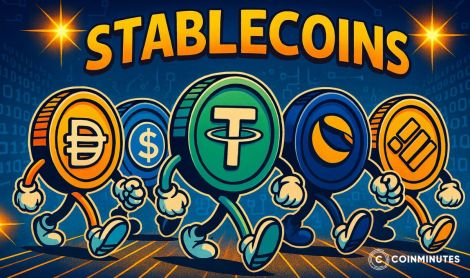What is Proof of Work (PoW)? What is Proof of Stake (PoS)? A Deep Dive Into The PoW vs PoS Comparison
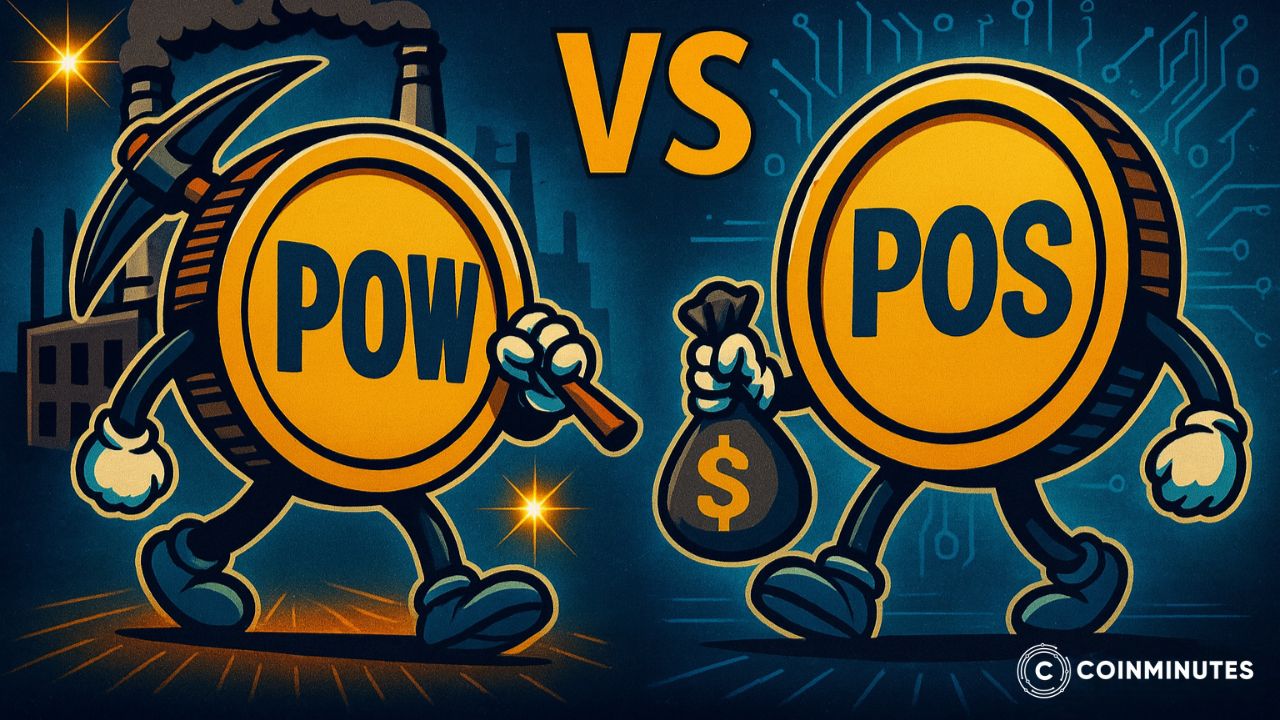
Have you ever wanted to know the real working of crypto beneath the hood? To be specific, how a huge decentralized, no overseer, no central server, and a bunch of anonymous participants can still get a consensus on what transactions are to be trusted? It sounds rather astonishing, doesn't it?
The amazing trick that allows everything to function is known as a "consensus mechanism". This is just a sophisticated phrase indicating the guidelines that a blockchain uses to ensure that every participant has the same data and that the network remains secure.
Among all the rulebooks in the cryptocurrency world, the two most significant ones are Proof of Work (PoW) and Proof of Stake (PoS). They present two entirely different ways of solving one and the same issue, and the decision of which is the main reason for the biggest "Aha!" moment in the whole crypto world. One is similar to a monster that is extremely energy-consuming but will be as safe as a fortress; the other is a fast, cost-effective system powered by financial rewards. Let us, at CoinMinutes, explain in detail, what they are, how they operate and why it is important.
What is Proof of Work (PoW)?
Imagine a giant, global lottery that's held every ten minutes. Millions of super-powerful computers are all furiously guessing random numbers, trying to find the one single "winning number" for that round. The first one to guess it wins a prize—a batch of brand-new crypto—and the honor of officially writing down the latest batch of transactions into the public ledger. That, in a nutshell, is Proof of Work. It’s the original consensus mechanism, the one that powers Bitcoin, and it was a truly groundbreaking invention by the mysterious Satoshi Nakamoto.
The core idea behind PoW is to make it incredibly difficult and expensive to add new blocks of transactions to the chain, but super easy for everyone else on the network to check if the work was done correctly. You have to prove you did the "work"—meaning you burned real-world electricity and used your computing power—to earn the right to update the ledger.
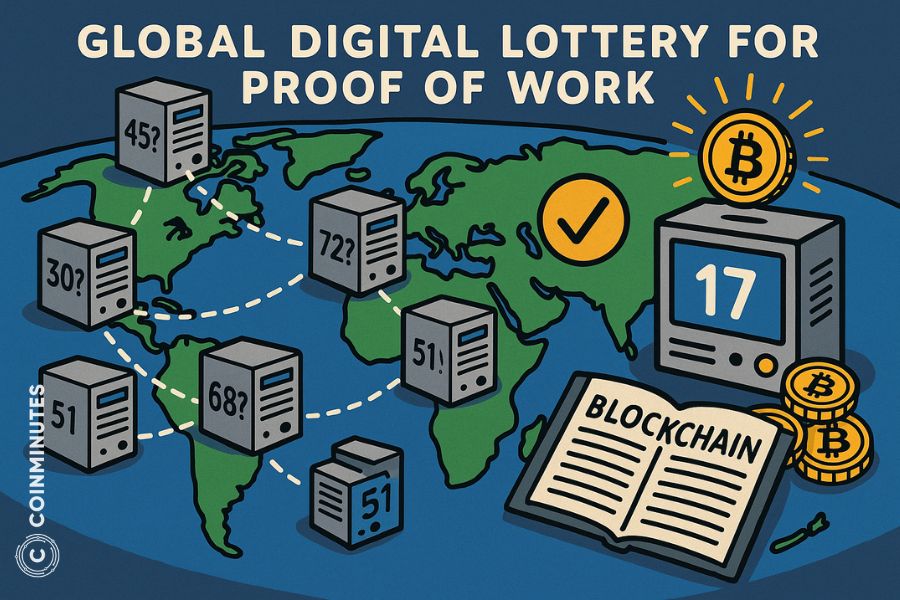
This "work" is what makes the blockchain "immutable," or nearly impossible to change. For an attacker to alter a past transaction, they would need to redo all of the computational work for that block and for every single block that came after it, all while trying to out-race the combined power of the entire honest network. This would require an almost unimaginable amount of energy and money, making the cost of an attack astronomically high. This is why PoW is considered by many to be the most secure consensus mechanism ever created. It's a system built on raw, brute-force computation, linking digital value directly to the expenditure of real-world energy.
How Does PoW Work?
The PoW system is a pretty clever mix of math and money that creates a secure network without needing a central authority. It looks complicated from the outside, but it breaks down into a few key parts that all fit together perfectly.
The Hash Function
The whole thing starts with a cool piece of math called a cryptographic hash function. Think of it like a one-way street for data. You can take any piece of information—your name, a book, a list of transactions—and put it through a hash function to get a unique, fixed-length code of letters and numbers (a "hash"). Here's the magic part: it's super easy to go from the data to the hash, but it's practically impossible to go from the hash back to the original data. If you hash the word "hello," you get a specific code. But if you have that code, you can't figure out it came from "hello." And if you change even a single comma in the original data, like hashing "Hello" with a capital H, you get a totally different and unpredictable code. This one-way, sensitive nature is the foundation of the PoW puzzle.
The Mining Process
This is the lottery part. The network sets a rule, saying, "Okay, to create the next block, you have to find a hash for all these new transactions that starts with, say, 15 zeros." Since you can't work backward from the hash, the only way to find one that fits the rule is to guess. So, "miners" (the people with the powerful computers) take the block's data, add a random little number to it called a "nonce," and hash it. The hash comes out random. Does it start with 15 zeros? Nope. So they change the nonce by one and try again. And again. And again. They are doing this trillions of times per second. It’s a brute-force guessing game on a massive scale. The first miner to get lucky and find a nonce that produces the "golden ticket" hash wins the race.
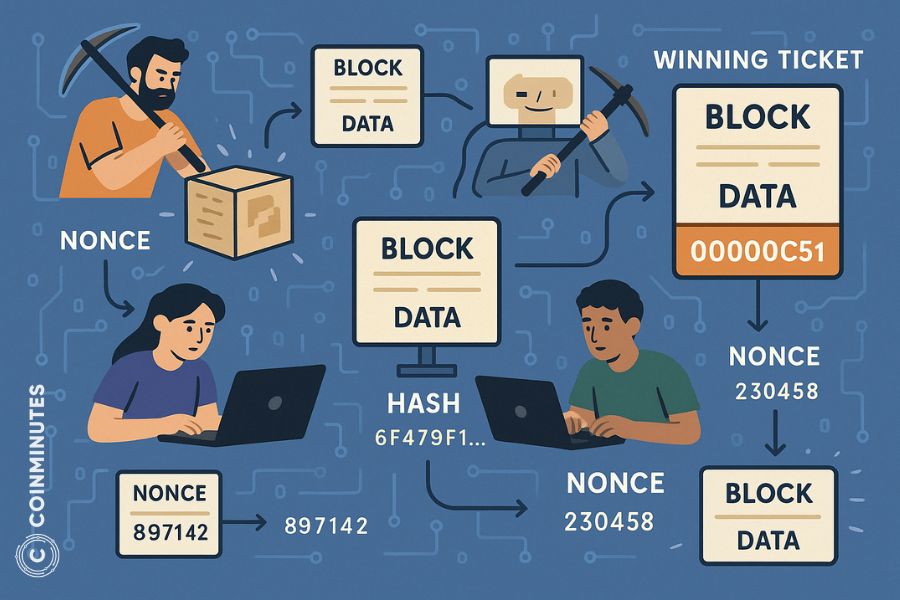
The Role of Difficulty
But wait, if more and more powerful computers join the network, won't they solve the puzzle faster and faster? Yep. That's why PoW networks have an automatic "difficulty adjustment." The Bitcoin network is programmed to check how fast blocks are being solved, and it adjusts the difficulty of the puzzle about every two weeks to keep the average block time at around 10 minutes. It's like the network is a coach that wants a race to always last exactly 10 minutes. If the runners get faster and start finishing in 8 minutes, the coach makes the racetrack longer (by requiring more zeros at the start of the hash). If they get slower and start finishing in 12 minutes, the coach shortens the track. This clever, self-regulating system keeps the pace of new blocks steady and the issuance of new coins predictable.
Why Is It Called “Work”?
It's called Proof of Work because finding that winning hash is undeniable proof that you have performed a massive amount of computational work. You had to burn real-world electricity and run your hardware at full tilt to find the answer. You can't fake it. An attacker who wanted to change a past transaction would have to re-do all of this work for that block, and for every block that came after it, which would require an economically infeasible amount of energy and computational power. The "work" is the security. The first time I really understood that Bitcoin's security is directly tied to the real-world cost of energy was a huge lightbulb moment for me.
Reward and Verification
So what does the winner get for all that effort? Two things: the block subsidy (a batch of brand-new coins that are created out of thin air) and all the transaction fees that people paid to have their transactions included in that block. And the best part? Once a winner broadcasts their solution, everyone else on the network can verify it in less than a second. They just take the block's data and the winning nonce, hash it once, and see if it produces the right hash. If it does, the block is confirmed, and the race starts all over again.
What is Proof of Stake (PoS)?
So, what about the new kid on the block? Proof of Stake is an entirely different approach to management. After witnessing the huge energy consumption of PoW, many clever people in the crypto world came up with the thought, "There must be a better way." Instead of a mad dash to use up the most energy, PoS operates more like a lottery.
One of the tickets to the lottery is to commit some of your own coins as a security deposit, which is called "staking." The more coins you commit to the stake, the more tickets you will have and the greater your chance of being chosen at random to be the next one to generate the next block.

The core idea is that the people with a significant financial stake in the system are the ones who are most incentivized to keep it running honestly. Why would you attack a network if you're one of its biggest investors? You'd just be destroying the value of your own money. Instead of securing the network with an external resource like electricity, PoS secures the network using the network's own native currency. This creates a neat, circular economic model where the people providing security are also the biggest long-term believers in the project.
This fundamental shift away from external costs is what allows PoS to be so much more efficient and scalable than its predecessor. It has become the consensus mechanism of choice for nearly all modern smart contract platforms that need to handle a high volume of transactions for applications like DeFi and gaming.
How Does PoS Work?
The PoS model gets rid of the whole competitive mining thing and replaces it with a system of validators, stakes, and penalties. It's a system built entirely on economic incentives, designed to be efficient, fast, and secure.
Staking and Validator Selection
First, you have to "stake" your coins to become a "validator." You're essentially putting your money where your mouth is, telling the network, "I have a stake in this, so you can trust me to play by the rules." On a network like Ethereum, you need to stake 32 ETH to become a full validator. For those who don't have that much, they can join "staking pools," where many people combine their coins together. Once you're a validator, the network uses a selection algorithm to choose who gets to create the next block. It's not just the richest person who always wins; the process usually has a random element to it, but having a larger stake does increase your odds. It's a way to select a block creator without needing a global, energy-intensive competition.
Slashing, Rewards & Penalties
This is the really clever part that keeps everyone honest. It's a classic carrot-and-stick approach.
-
The Carrot (Rewards): If you're chosen to validate a block and you do your job correctly, you get a reward, which usually comes from the transaction fees in that block. This is how people earn a yield or interest on their staked crypto.
-
The Stick (Slashing): But if you try to cheat the system—say, by trying to approve a fake transaction or by being offline for too long—the network will punish you with something called "slashing." This means the network's code will automatically destroy a portion of your staked security deposit. If you do something really bad, you could lose your entire stake. I remember watching a validator on a smaller PoS chain get slashed for a significant amount of money because their server was misconfigured. It's a very real and very powerful deterrent.
Energy Efficiency & Scalability
This is PoS's killer feature. Because there is no massive, energy-guzzling mining race, PoS is incredibly efficient. When Ethereum, the second-biggest cryptocurrency, switched from PoW to PoS in 2022, its energy consumption dropped by over 99.9%. I'm going to repeat that: 99.9%. That's not a typo. That's a real statistic from the Crypto Carbon Ratings Institute. That’s like replacing the world's entire fleet of gas-guzzling trucks with a handful of electric scooters. This efficiency also makes PoS networks much faster and more scalable. They can handle more transactions at a lower cost, which is essential for running things like DeFi apps or games. You can find more details on this in our deep dives at CoinMinutes.
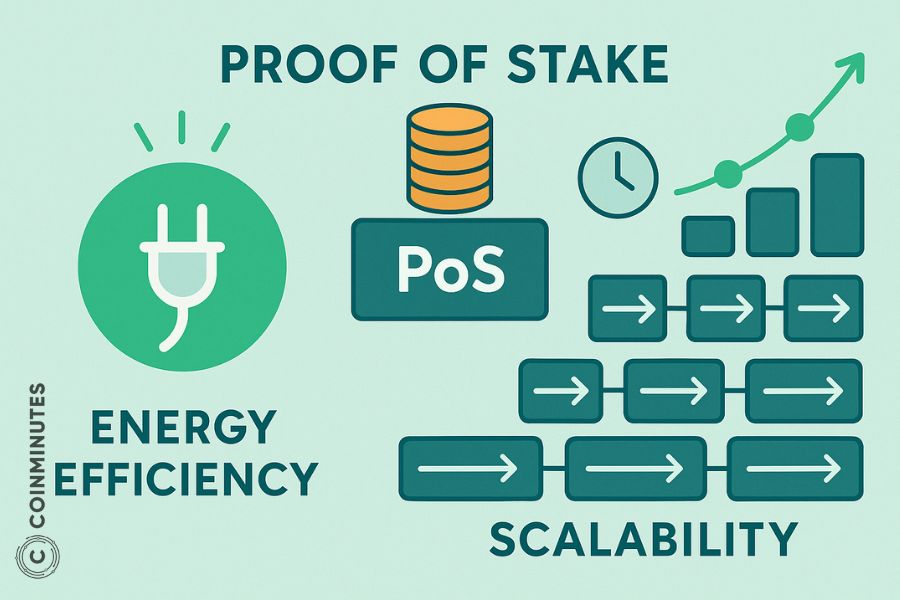
Security Features & Attack Vectors
The security of PoS is based on a simple economic idea. To attack the network, you'd need to control a huge amount of its native currency to have a high chance of being selected as a validator. This would be incredibly expensive. And here's the catch-22 for an attacker: if you succeed in attacking the network, you'll cause a panic, and the price of the coin will crash. This means you'd be destroying the value of the very asset you spent a fortune to acquire. It's like successfully robbing a bank that you happen to be the majority owner of. It's a self-defeating attack, and when combined with the threat of slashing, it creates a very robust security model.
PoW vs PoS: What Are The Key Differences?
So, let's put them head-to-head. They are two very different beasts with very different philosophies on how to secure a network. It's not just a technical difference; it's a difference in values.

Security: Which is Safer?
This is one of the biggest debates in all of crypto. PoW is secured by the raw physics of energy and computation. Its security is external to the crypto asset itself. It's been battle-tested by Bitcoin for over a decade and has never been successfully 51% attacked. It's an absolute fortress, proven by time. PoS is secured by clever economic game theory. Its security is internal, based on the value of the crypto asset itself. The idea is that it's just not profitable to attack it. It's a newer model, but it's proven to be very secure in practice on major networks like Ethereum, which holds hundreds of billions of dollars in value. There's no clear winner here; they are just different security models for different purposes.
Decentralization: Which is More Decentralized?
This is another can of worms. Both systems have centralization pressures. In PoW, the high cost of specialized mining hardware (ASICs) and the need for cheap electricity has led to a handful of massive mining companies and "mining pools" controlling a large chunk of the network's hashrate. You can see this on public data sites that track the distribution of Bitcoin's hashrate. In PoS, the criticism is that the "rich get richer." The wealthiest stakers can afford the biggest stakes, which lets them earn the most rewards, which they can then use to increase their stake even further. This can lead to a concentration of power over time, especially with the rise of large staking pools and exchanges that stake on behalf of their users. It's a "pick your poison" situation.
Scalability: Which is Faster and Cheaper?
There's no contest here. PoS wins, hands down. PoW's competitive mining process is inherently slow; Bitcoin can only handle about 7 transactions per second (TPS). PoS was designed for speed and efficiency. Because there's no race, blocks can be produced much faster. Modern PoS chains like Solana can handle thousands of TPS. This is why all of the major smart contract platforms that need to handle a huge volume of transactions for apps, games, and DeFi are built on PoS.
Environmental Impact: Which is Greener?
Again, this is an easy one. PoS is the sleek electric vehicle, while PoW is the gas-guzzling muscle car. The ESG (Environmental, Social, and Governance) narrative has become increasingly important, especially for institutional investors, and the massive energy footprint of PoW is seen as a major liability. The low energy consumption of PoS is one of the primary reasons it has become the industry standard for new projects.
Economic Incentives: Miners vs Stakers
This is a subtle but important difference in mindset. Miners in PoW have constant real-world costs—electricity bills, new hardware, warehouse rent. This creates constant selling pressure on the coin, as they have to sell what they earn to pay their bills and hopefully make a profit. Stakers in PoS, on the other hand, are incentivized to hold onto their coins for the long term. Their stake is their capital infrastructure. This encourages a community of long-term investors who are financially aligned with the network's health and security.
How to Choose Between PoW and PoS?
The choice isn't about which one is "better" in a vacuum; it's about what a project is trying to achieve. It all comes down to the "blockchain trilemma," a concept that says you can't have perfect decentralization, perfect security, and perfect scalability all at once; you have to make trade-offs.
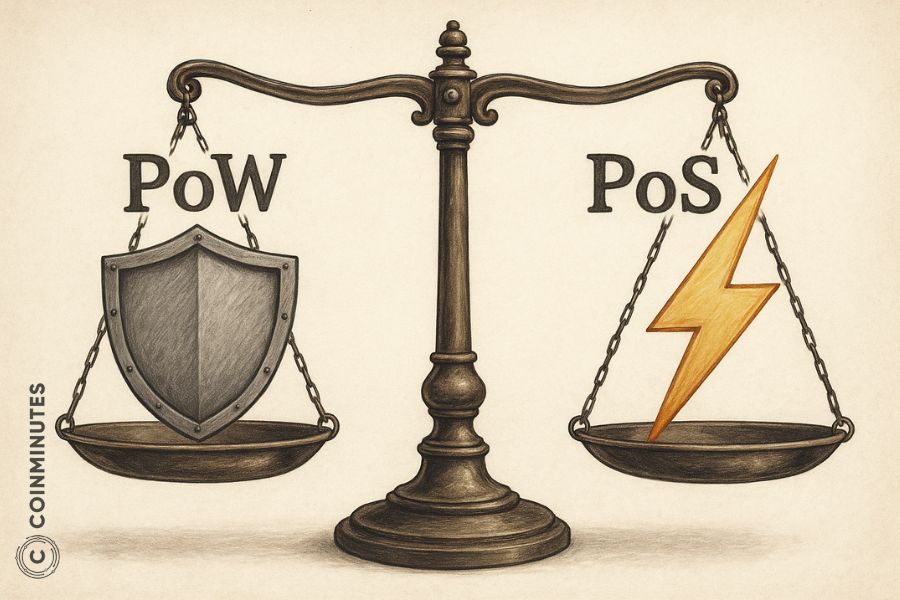
Factors to Consider
-
Goal of the Network: Is the primary goal to create a maximally secure and censorship-resistant store of value (favoring PoW)? Or is it to create a high-performance platform for applications (favoring PoS)?
-
Level of Maturity: PoW is the most time-tested and battle-hardened consensus mechanism.
-
Environmental Concerns: PoS is the only viable option for projects that prioritize environmental sustainability.
Which Projects Use PoW or PoS?
The crypto world is divided into two main camps very visibly:
-
Proof of Work: Bitcoin (BTC) is the one and only hero of this category. In addition to Bitcoin, there are some other examples such as Litecoin (LTC), Dogecoin (DOGE) and Monero (XMR) which is the privacy coin. These projects are all security-oriented and have been around for a long time providing a good track record of their security.
-
Proof of Stake: The largest is Ethereum (ETH). Eventually, almost all major smart contract platforms have adopted PoS or some modified version of it, including Cardano (ADA), Solana (SOL), Polkadot (DOT), and Avalanche (AVAX).
The Hybrid Approach and New Alternatives
While PoW and PoS are the main contenders, they're not the only options. Some early projects experimented with hybrid systems that used both. And other consensus mechanisms like Delegated Proof of Stake (DPoS) and Proof of Authority (PoA) have been created, each making different trade-offs between speed, security, and decentralization. The world of consensus is always evolving, but PoW and PoS remain the two foundational pillars.
The Future of PoW and PoS: Trends & Predictions
The trend in the crypto world is crystal clear: almost every new, innovative project is being built on Proof of Stake. It's just more practical, scalable, and sustainable for anything that needs to be more than just simple money. The environmental and cost benefits are too great for new projects to ignore. We are also seeing a ton of innovation within PoS itself, with the rise of things like "liquid staking," which allows you to use your staked assets in DeFi, further increasing the capital efficiency of the system.
But don't count Proof of Work out. It's not going anywhere.
It's highly unlikely that Bitcoin will ever change from PoW. Its massive energy use is seen by its supporters as a feature, not a bug—the ultimate proof of its security and its link to the real world. The future that many of us at CoinMinutes see is one where Bitcoin remains the unchallenged king of PoW, acting as the digital gold standard and the ultimate settlement layer of the crypto world. Meanwhile, the entire vibrant, innovative ecosystem of DeFi, NFTs, and Web3 will be built on the fast, efficient, and flexible rails of various PoS-based platforms. They're not really competing anymore; they're playing two totally different sports on two totally different fields. This specialization is a sign of a maturing industry.

Continue Your Crypto Journey with CoinMinutes
Figuring out the difference between proof of work and proof of stake is just a giant step towards understanding the whole crypto world. It's not only about technical details, these are the very fundamental engines that decide how one blockchain will behave, what she's good for and what her core values are. One is focused on absolute security, while the other on seamless performance.
The cryptocurrency universe is vast and volatile, but the more you comprehend these fundamental concepts, the more secure you'll become. At CoinMinutes, we are always ready to simplify these intricate topics into easy and convenient guides for your learning process. We hold the view that a more knowledgeable crypto user is a safer one. Keep up with your studies, and thank you for being with CoinMinutes.
Frequently asked questions
Yes, absolutely! The most famous example of this is Ethereum. It ran on Proof of Work for years, but the developers planned a massive, multi-year upgrade to switch to Proof of Stake to improve its speed and energy efficiency.
This event was called "The Merge," and it successfully happened in September 2022. It was like a team of surgeons changing the engine of a race car while it was still speeding down the highway—a huge technical achievement that proved it was possible to transition a massive, live network.
Yes, staking is definitely not risk-free. While it can be a great way to earn rewards, you're taking on a few key risks:
-
Slashing Risk: You stake your coins by delegating them to a "validator." If that validator misbehaves (either on purpose or by accident with a technical glitch), the network can "slash" their stake. This means a portion of their staked coins—including yours—is destroyed as a penalty.
-
Price Volatility: This is the biggest risk. You might be earning a 5% reward on your staked coins, but if the coin's price drops by 50%, you're still down a lot of money. The staking rewards might not be enough to offset the market risk.
-
Lock-up Periods: Some networks require you to lock up your coins for a specific period when you stake them. During this time, you can't sell your coins, even if the price is crashing. You're stuck on the ride until the lock-up period ends.
That's the million-dollar question, and the answer gets to the very heart of Bitcoin's philosophy. The Bitcoin community values maximum security and decentralization above everything else.
They see PoW's massive energy use as a feature, not a bug. It's the ultimate proof of security, a physical wall of energy that's tied to the real world and is incredibly expensive to attack. They also argue that PoS can lead to the rich getting richer and more centralized control.
Changing something so fundamental to Bitcoin's design is seen as incredibly risky and completely against its core principles. So, while it's technically possible, the social consensus to do it will likely never happen. Bitcoin is a PoW machine, and that's that.
 English
English
 Vietnamese
Vietnamese

















